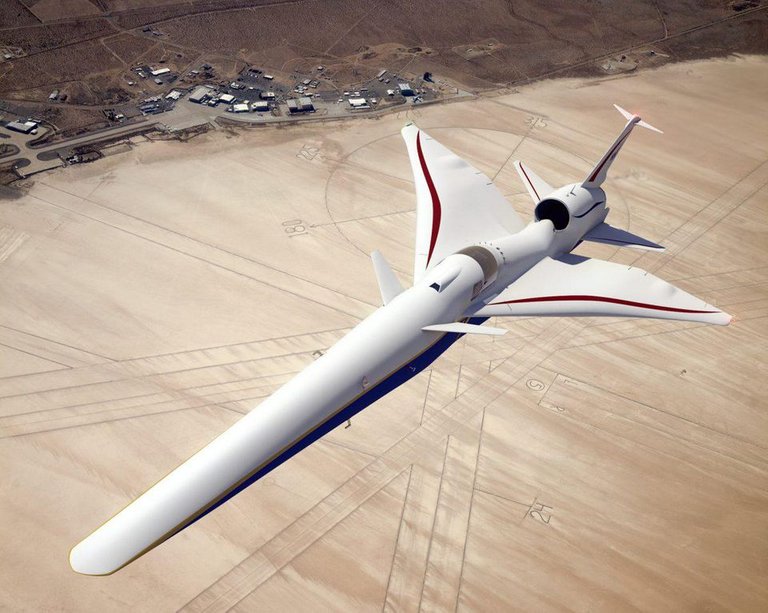NASA has officially committed to the first flight of its supersonic test plane in just three years.
By 2021 we can expect to see (but not hear) the X-59, a test aircraft for NASA's Quiet Supersonic Technology (QueSST).
NASA’s first piloted, full-size X-plane in more than three decades, the X-59's funding and development timeline was confirmed today. “This aircraft has the potential to transform aviation in the United States and around the world by making faster-than-sound air travel over land possible for everyone,” said NASA Administrator Jim Bridenstine. “We can’t wait to see this bird fly!”

Illustration of the X-59 QueSST as it flies above NASA's Armstrong Flight Research Center in California. Lockheed Martin
Cruising at 55,000 ft. at a speed of around 940 mph, the X-59 is said to create a sound far quieter than a regular sonic boom, thanks largely to a new design. The X-59's long nose and highly swept wings gradually increase the pressure around the airframe and decrease the shockwaves as the aircraft passes through supersonic speed. Advances in the use of composite technologies, instead than titanium, is part of the reason why the new quieter design is now possible.
The tech being pioneered by the X-59 could resurrect supersonic travel. If you ever wondered why Concorde only ever flew across the Atlantic Ocean between New York/Washington and London/Paris, it was the loud supersonic boom caused by turbulent airflow along the span of the wing. Supersonic airplanes are consequently presently banned from flying over populated areas.
Cue this new technology from NASA and Lockheed Martin’s Skunk Works, whose Low-Boom Flight Demonstration experimental airplane (LBFD) is part of its Quiet SuperSonic Technology Preliminary Design (QueSST) project. It seeks to reduce the sonic boom to sonic ‘thump'. The X-59 QueSST is shaped to reduce the loudness of a sonic boom to that of a gentle thump, if it’s heard at all.
“This is a monumental milestone for the project,” said Jaiwon Shin, NASA’s associate administrator for aeronautics. “I’m extremely proud of the team for its hard work getting to this point, and we all look forward to watching this aircraft take shape and then take flight.”
The X-59 QueSST's flight tests to prove the how quiet its supersonic technology is will see it cruise over four or six U.S. cities. Data on whether or not the flights caused any annoyance will then be used to inform U.S. and international regulators about whether or not supersonic flights over land can be considered legal.
However, it's not just NASA and Lockheed Martin that are working on supersonic air travel. Boeing also has a design concept for a hypersonic aircraft, as does Boom Technology with its XB-1 Supersonic Demonstrator, while Virgin Galactic's SpaceShipTwo, though designed for space tourism, also achieves supersonic speeds.
Warning! This user is on my black list, likely as a known plagiarist, spammer or ID thief. Please be cautious with this post!
our discord. If you believe this is an error, please chat with us in the #cheetah-appeals channel in